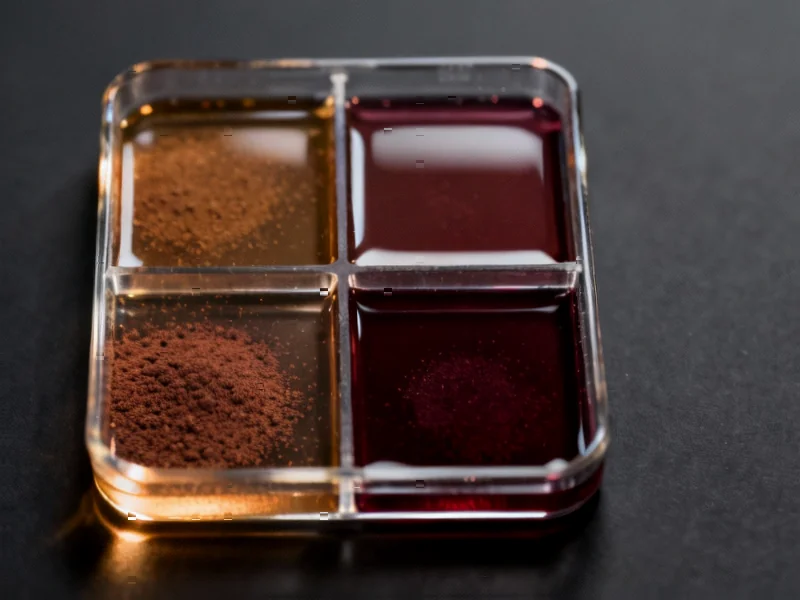Advanced Nanoparticle Synthesis Through Pulsed Laser Ablation
The manufacturing of functional nanoparticles represents one of the most promising frontiers in industrial materials science. Recent research published in Scientific Reports demonstrates how pulsed laser ablation in liquids (PLAL) enables precise control over iron oxide (Fe₂O₃) nanoparticle production, with significant implications for industrial applications ranging from catalysis to medical imaging.
Table of Contents
What makes this manufacturing approach particularly compelling is how solvent selection and laser energy parameters directly influence both nanoparticle yield and colloidal stability – two critical factors for industrial scale-up and commercial application., according to industry news
Solvent Environment: The Manufacturing Game Changer
The research reveals that the liquid medium during ablation significantly impacts production efficiency. Ethanol emerged as the optimal solvent, producing the highest nanoparticle concentration at 58 µg mL⁻¹ when combined with 640 mJ laser fluence. Water and isopropanol followed closely at 50 µg mL⁻¹, while acetone yielded the lowest concentration at 46 µg mL⁻¹.
The stability factor proved equally crucial for practical applications. Water-based colloids began agglomerating and precipitating within minutes of synthesis, presenting significant challenges for industrial processing and storage. In contrast, ethanol and isopropanol samples demonstrated superior colloidal stability, maintaining suspension integrity over extended periods., according to expert analysis
Optical Properties and Material Purity
UV-Vis spectroscopy confirmed that all synthesized nanoparticles exhibited characteristic iron oxide absorption profiles, with strong absorption in the ultraviolet region (250-400 nm) and diminishing intensity at longer wavelengths. This consistent optical behavior across different synthesis conditions indicates high material purity – a critical quality control metric for industrial production., according to technological advances
“The absence of significant spectral variations beyond intensity changes confirms that the liquid environment doesn’t introduce additional energy levels or alter the fundamental material properties,” the research notes. This consistency is vital for manufacturers requiring predictable material performance across production batches.
Band Gap Engineering for Specific Applications
All synthesized samples exhibited an optical band gap of approximately 2.8 eV, consistent with α-Fe₂O₃ (hematite). This predictable electronic structure enables manufacturers to tailor nanoparticles for specific applications, from photocatalysis where band gap matching to target reactions is crucial, to electronic devices requiring precise semiconductor properties., according to market analysis
Surface Chemistry and Manufacturing Challenges
X-ray photoelectron spectroscopy (XPS) analysis revealed the complex surface chemistry of the produced nanoparticles. The presence of carbon signals (attributed to adventitious carbon common in XPS analysis) and the relative weakness of iron signals highlighted challenges in achieving perfectly homogeneous nanoparticle coatings – an important consideration for surface-sensitive applications.
Notably, the acetone-synthesized sample showed minimal Fe-O bonding signals, correlating with its lower production yield observed in both concentration measurements and UV-Vis analysis. This consistency across multiple characterization techniques validates the reliability of quality assessment methods for industrial quality control.
Industrial Implications and Scaling Potential
The research demonstrates that PLAL offers several advantages for industrial nanoparticle manufacturing:
- Solvent-controlled yield optimization – enabling manufacturers to maximize production efficiency
- Predictable material properties – ensuring consistent performance across production batches
- High purity output – reducing the need for extensive post-processing purification
- Tunable stability characteristics – allowing customization for specific application requirements
As industrial demand for specialized nanoparticles continues to grow across sectors including electronics, energy storage, and biomedical engineering, understanding these fundamental manufacturing parameters becomes increasingly critical. The ability to precisely control nanoparticle characteristics through relatively simple process adjustments – solvent selection and laser energy – represents a significant advancement toward scalable, cost-effective nanomaterial production., as earlier coverage
For manufacturers exploring nanoparticle integration into their products or processes, this research provides valuable insights into optimizing synthesis conditions for specific application requirements while maintaining the cost-effectiveness necessary for commercial viability.
Related Articles You May Find Interesting
- Amine-Modified Lignin Shows Promise for Nitrate Removal in Water Treatment
- Unlocking Nature’s Pharmacy: How Light and Hormones Boost Medicinal Compounds in
- Study Reveals Optimal Fermentation Methods Boost Cow Manure’s Fertilizer Potenti
- Navigating the Green Steel Revolution: ESG Insights and Challenges in Belt and R
- Beyond Casimir: Why Standard Force Calculations Fail in Microscale Cavity Experi
This article aggregates information from publicly available sources. All trademarks and copyrights belong to their respective owners.
Note: Featured image is for illustrative purposes only and does not represent any specific product, service, or entity mentioned in this article.
